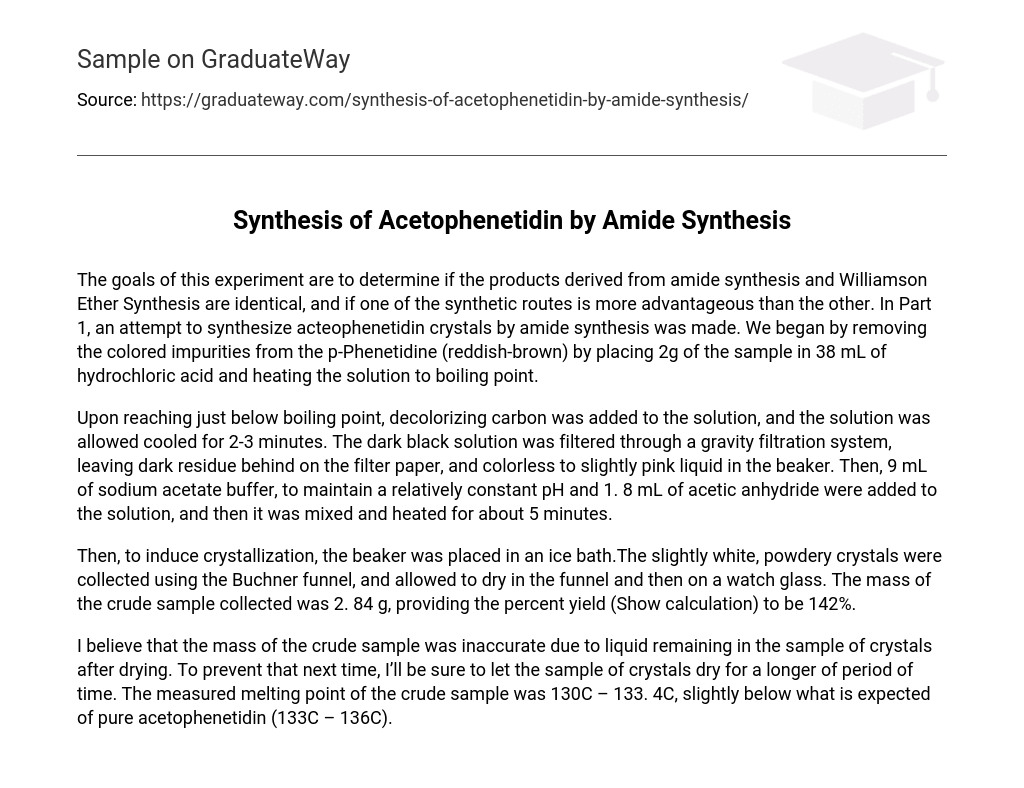The objective of this experiment is to compare the products of amide synthesis and Williamson Ether Synthesis, and determine if one synthetic route is more favorable than the other. In Part 1, we attempted to synthesize acteophenetidin crystals using amide synthesis. To begin, we eliminated the colored impurities from the p-Phenetidine (reddish-brown) by adding 2g of the sample to 38 mL of hydrochloric acid. The solution was then heated to boiling point.
The solution was heated until it reached just below boiling point. Then, decolorizing carbon was added to the solution. After that, the solution was allowed to cool for 2-3 minutes. Through a gravity filtration system, the dark black solution was filtered, leaving dark residue on the filter paper and colorless to slightly pink liquid in the beaker. To maintain a relatively constant pH, 9 mL of sodium acetate buffer were added to the solution. Additionally, 1.8 mL of acetic anhydride were also added. The solution was then mixed and heated for about 5 minutes.
Next, in order to initiate crystallization, the beaker was positioned in an ice bath. The Buchner funnel was utilized to gather the marginally white, powdery crystals, which were then left to dry on both the funnel and a watch glass. The crude sample’s mass collected equaled 2.84 g, resulting in a percent yield of 142% (Show calculation).
I suspect that the mass of the crude sample was incorrect because there was some liquid left in the crystal sample after it was dried. To avoid this in the future, I will ensure that I allow the crystals to dry for a longer period of time. The recorded melting point of the crude sample was slightly lower (130C – 133.4C) than the expected range for pure acetophenetidin (133C – 136C).





